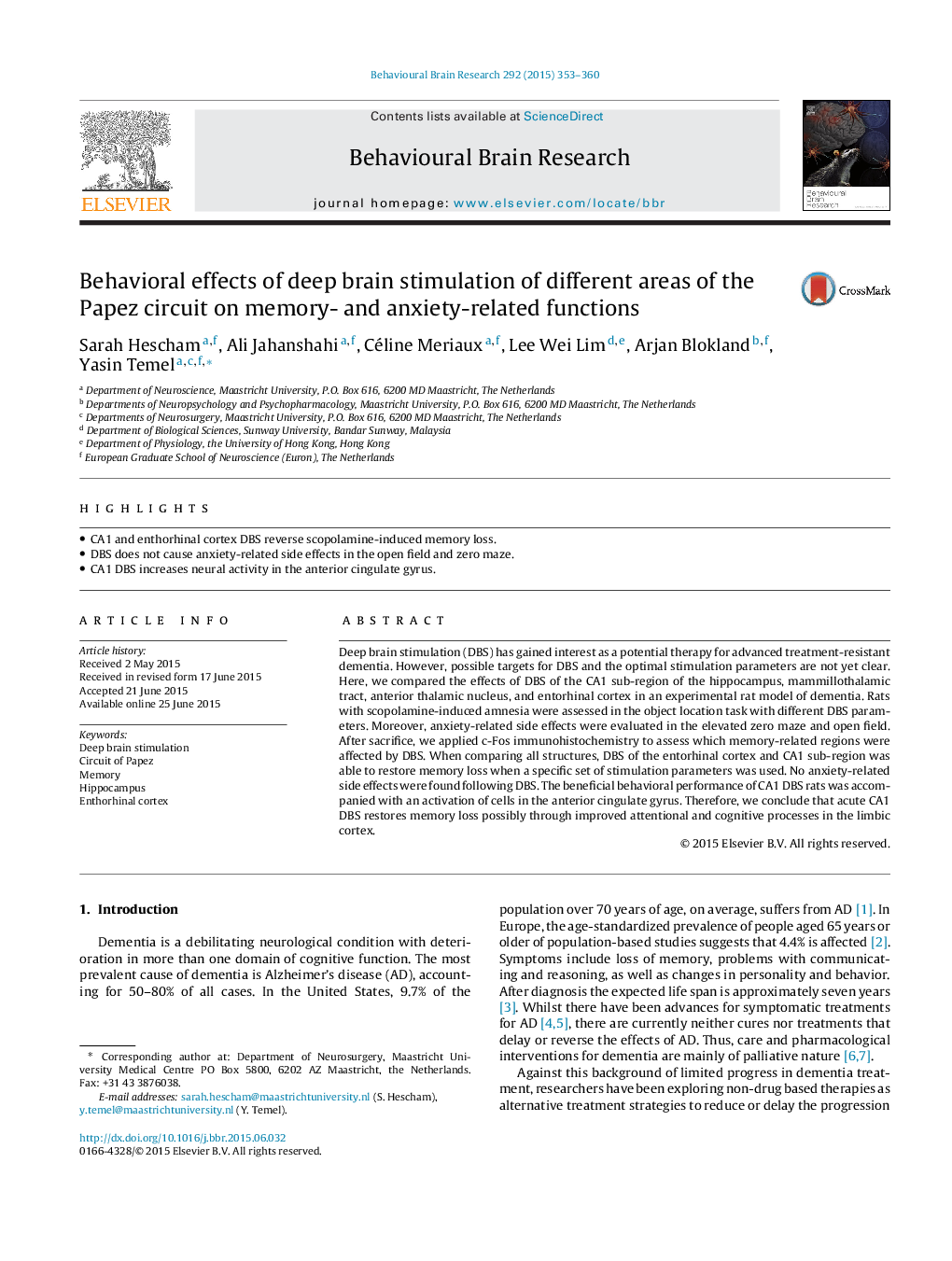| Article ID | Journal | Published Year | Pages | File Type |
|---|---|---|---|---|
| 6256523 | Behavioural Brain Research | 2015 | 8 Pages |
â¢CA1 and enthorhinal cortex DBS reverse scopolamine-induced memory loss.â¢DBS does not cause anxiety-related side effects in the open field and zero maze.â¢CA1 DBS increases neural activity in the anterior cingulate gyrus.
Deep brain stimulation (DBS) has gained interest as a potential therapy for advanced treatment-resistant dementia. However, possible targets for DBS and the optimal stimulation parameters are not yet clear. Here, we compared the effects of DBS of the CA1 sub-region of the hippocampus, mammillothalamic tract, anterior thalamic nucleus, and entorhinal cortex in an experimental rat model of dementia. Rats with scopolamine-induced amnesia were assessed in the object location task with different DBS parameters. Moreover, anxiety-related side effects were evaluated in the elevated zero maze and open field. After sacrifice, we applied c-Fos immunohistochemistry to assess which memory-related regions were affected by DBS. When comparing all structures, DBS of the entorhinal cortex and CA1 sub-region was able to restore memory loss when a specific set of stimulation parameters was used. No anxiety-related side effects were found following DBS. The beneficial behavioral performance of CA1 DBS rats was accompanied with an activation of cells in the anterior cingulate gyrus. Therefore, we conclude that acute CA1 DBS restores memory loss possibly through improved attentional and cognitive processes in the limbic cortex.
